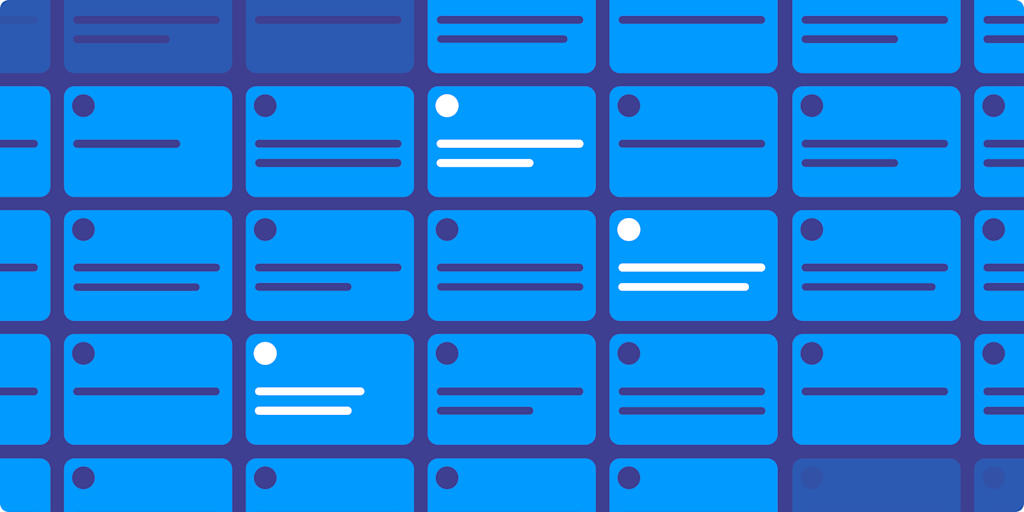As Kurt Vonnegut once said, “The triumph of anything is a matter of organization.”
And he’s right.
The most organized marketers are 397% more likely to be successful than those who aren’t well-organized.
A dynamic marketing calendar is one of the key puzzle pieces to organizing your marketing team.
Here’s what you need to include in that marketing calendar and how monday.com can help.
What is a marketing calendar and why is it important?
A marketing calendar is a planned schedule of your marketing activity over a set period.
High-level marketing calendars may run over a year, whereas low-level calendars may show upcoming monthly or weekly marketing campaigns in more detail.
Your marketing schedule will usually include all information about upcoming marketing campaigns. This may include information on tasks that need to be completed, team members involved, deadlines, budget information, and distribution channels.
In general, your marketing calendar will include all information about your:
- Social media marketing
- Email campaigns
- Content marketing strategy
- Advertising campaigns
- PR and media
- Event promotion initiatives
It’s highly beneficial to create a marketing content calendar. Marketers who document their marketing strategy are 313% more likely to have successful campaigns.
This is because marketing calendars enable you to visualize your strategy to get an overview of upcoming and past campaigns.
Not only does this aid high- and low-level planning, but advanced scheduling also gives you time to research and develop time-specific marketing initiatives related to each holiday season, product launches, events, etc.
You’ll also have plenty of time to make adjustments if something changes along the way.
A dynamic marketing calendar will foster team collaboration and aid productivity, so everyone’s on the same page and meeting deadlines. Not only does it act as a centralized place for campaign details, assets, updates, and communications — you’ll also be able to track progress.
69% of marketers complain that they don’t have a centralized place to discover and manage content for easy repurposing. With a sophisticated marketing calendar, like those that you can build on monday.com’s Work OS, everything is in one place.
This makes it simple to reorganize campaign assets, if necessary.
Just take a look at the real estate firm Kalamaras Group.
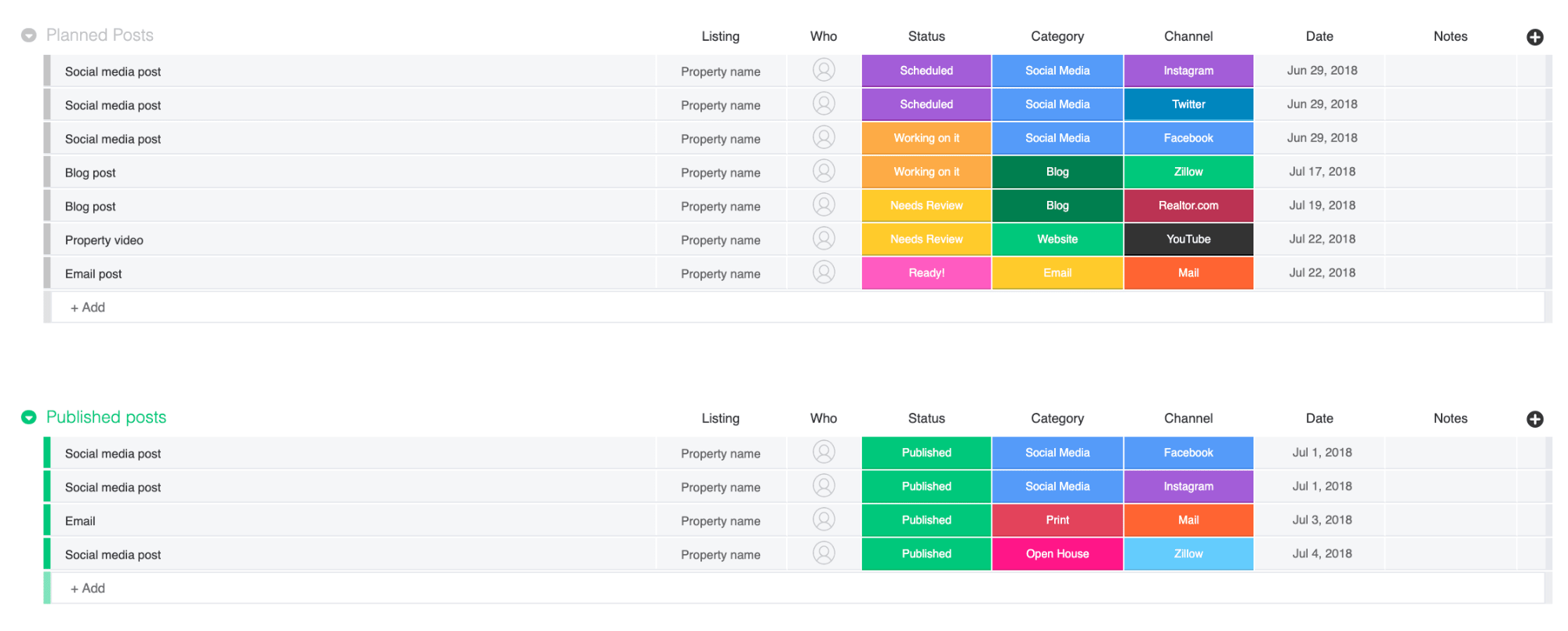
Kalamaras Group uses monday.com’s Work OS to build a highly-visual marketing calendar that makes sure the whole marketing team knows the status of each campaign. Thanks to this planning, nothing gets missed.
As Joyce Wismer, Marketing Coordinator for Kalamaras Group, puts it, “Using this template lets me sleep at night. As the marketing coordinator for a busy real estate team, I no longer fear forgetting a promised post or ad. It takes just seconds to add to the planning section, review published marketing, reschedule posts, or export data for a client report. File uploads directly to each pulse have eliminated the need to send email attachments to everyone!
Key components of an effective marketing calendar
A basic marketing content calendar shows you which campaigns are in the pipeline.
But why settle for basic when you can build something dynamic?
When you build a marketing calendar on monday.com’s Work OS, you’ll get a highly-visual tool that shows you everything from deadlines to digital assets.If you want a marketing calendar that keeps your team in check and your campaigns on deck, here’s what it will need to include.
1. High- and low-level planning
Nearly half of all marketers complain that it’s tough to get good visibility into fluid marketing plans.
With a powerful marketing calendar, like the templates on monday.com, you can build both high- and low-level marketing schedules to get a 360-degree view of all your past and upcoming campaigns.
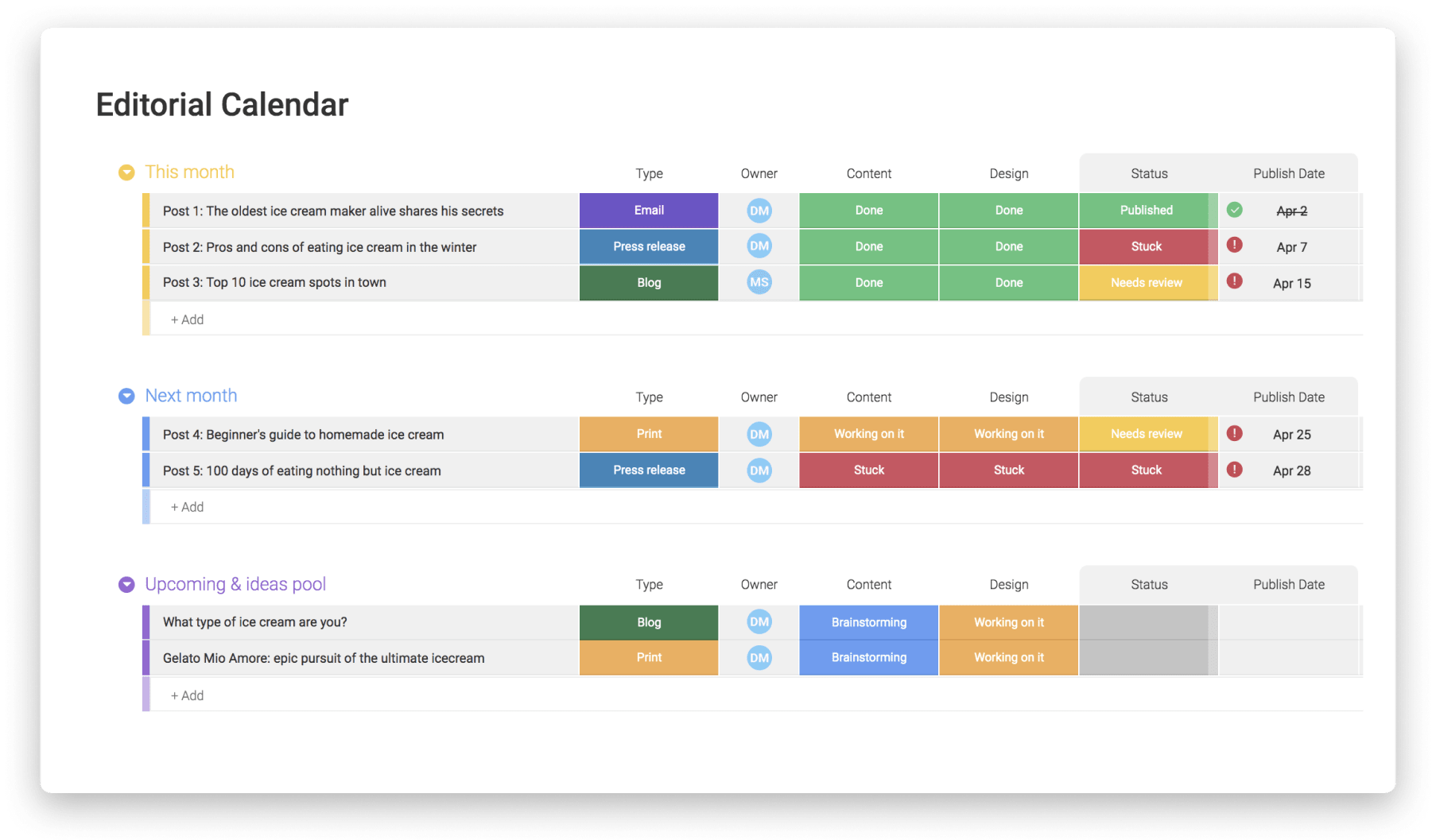
Use your high-level marketing calendar to plan broad campaigns, note marketing goals, and assign a target audience for each platform.
Support this with a low-level calendar that drills down into the nuts and bolts of each campaign on a monthly or weekly basis. Plan out each post, assign team members, centralize assets, and monitor content creation and distribution progress.
With such comprehensive visibility, teams are better equipped to create content well in advance and make alterations if changes occur.
Not only that, but such in-depth planning leads to effectiveness. Marketing teams that are more proactive with project planning are 356% more likely to be successful.
2. Accountability measures
On average, marketers spend 7% of their week organizing task ownership and responsibility.
Make this process easier with an advanced marketing calendar that allows you to assign marketing tasks to your team directly in the tool.
By collating this information all in one place, everyone on the team knows who the go-to person is for each task. They all know who to speak to about progress, updates, and changes.
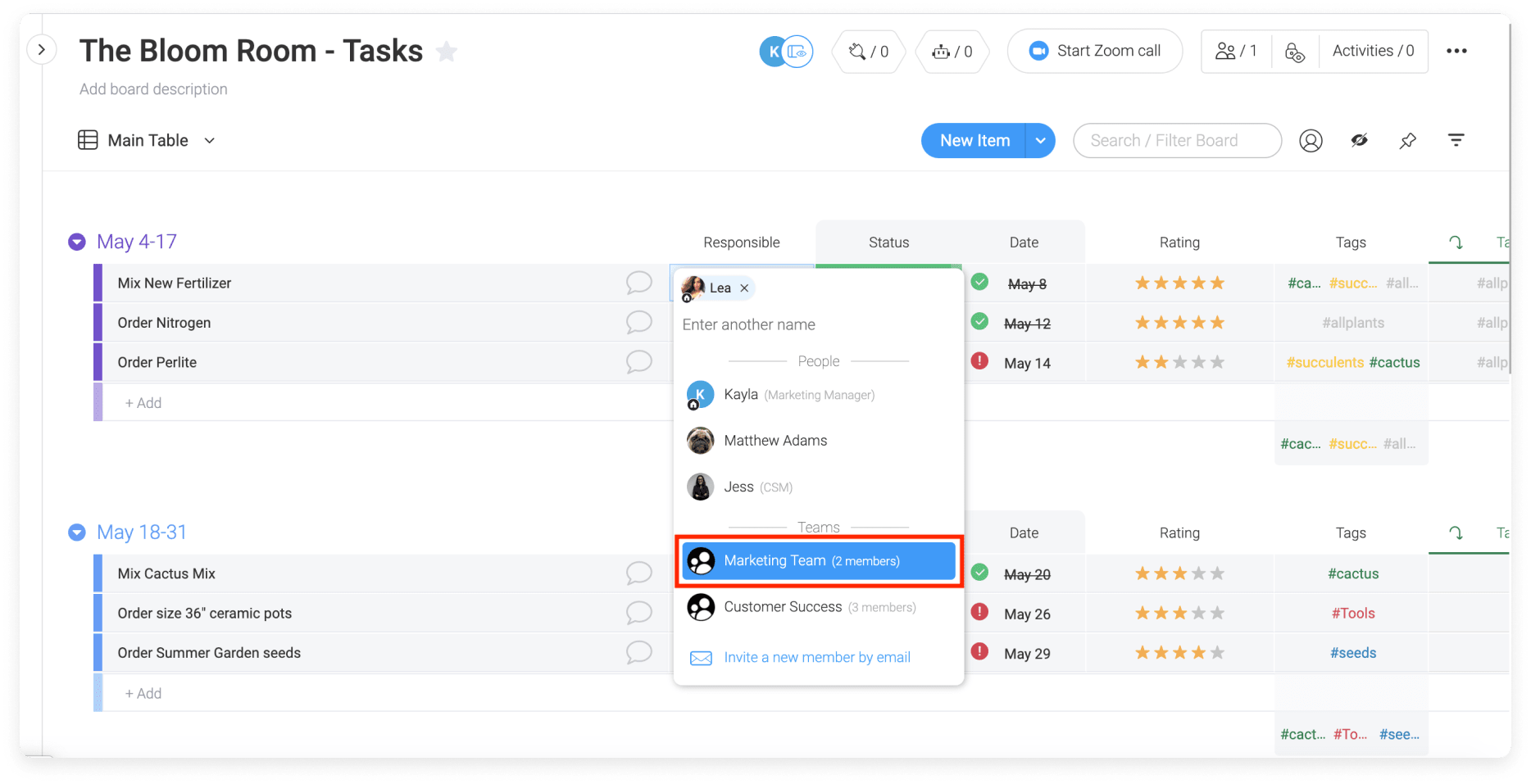
Equally, you can trace bottlenecks back to particular team members or departments, improving your accountability measures.
3. Deadlines and timelines
68% of marketers usually or always plan their marketing calendars ahead of time. You’ll do the same if you know what’s good for you.
When planning ahead, your marketing schedule needs to show timescales for each project to keep your team on track.
The best digital marketing calendars will show both deadlines and timelines.
Your deadlines show your team members when each post should be ready for release. Deadline indicators are pretty crucial since most marketers set deadlines for almost every task. In fact, only 1% of marketers never set a deadline.
Your timelines show the period over which your campaigns run.
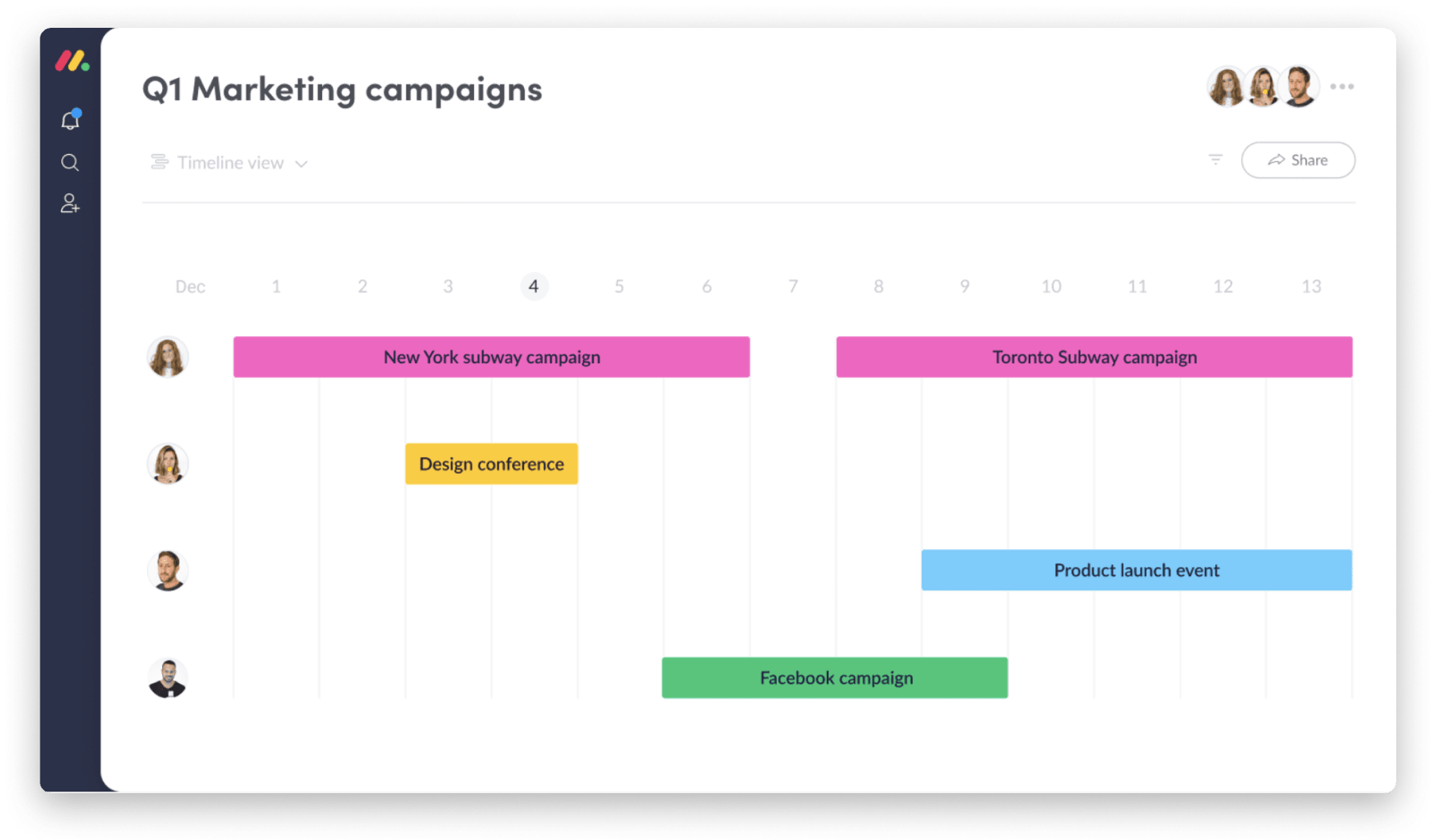
Look for a platform like monday.com’s Work OS that enables Gantt Chart views — this is a great way to visualize timelines and see which team members are available.
4. Marketing channel and campaign categorization
When you consider that 19% of marketers say email marketing is most effective, while 18% say it’s social media advertising, and 13% indicate blog posts work best, it’s obvious that you need a cross-channel marketing plan.
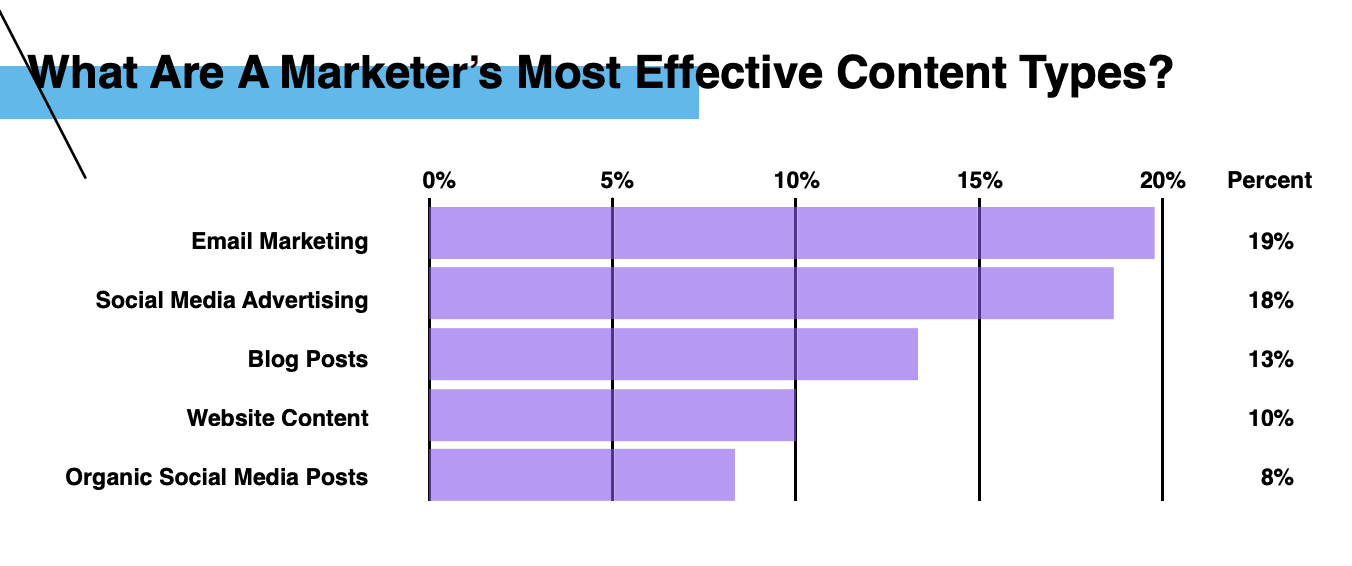
To avoid confusion when publishing campaigns, your marketing calendar should indicate where each post will be published and which type of campaign it is.
Not only will this help the organization at the distribution stage, but you’ll also be able to see how balanced your digital marketing strategy is.
Say you have lots more email campaigns than social media campaigns — if your marketing content calendar doesn’t indicate campaign types, you won’t see these gaps in your strategy.
5. Budget and resource specifications
More than 40% of marketers say that it’s challenging to manage budgets and people resources.
This is especially true for remote teams, 27% of which say it’s tough to maximize resources.
Budget and resource allocation is such a burden that 13% of a marketer’s week is spent on budget-related tasks.
Find marketing calendar software that will help you allocate and track budgets as you go.

That way, all team members can see what budget is available and what’s been used, so that marketing managers don’t have to spend excess time having budget discussions.
Your marketing calendar should also help allocate and organize resource usage. Plus, with a marketing calendar that enables Gantt Chart views, you can see when resources are being used, so there’s no overlap between projects.
6. Digital asset management
Asset management can be a real problem when there’s no centralized place for your team to store and locate digital assets.
Due to a high level of disorganization, it’s common for marketers to spend 10% of their week distributing assets.
Tackle this chaos by centralizing all documents, images, and digital assets on your marketing calendar.
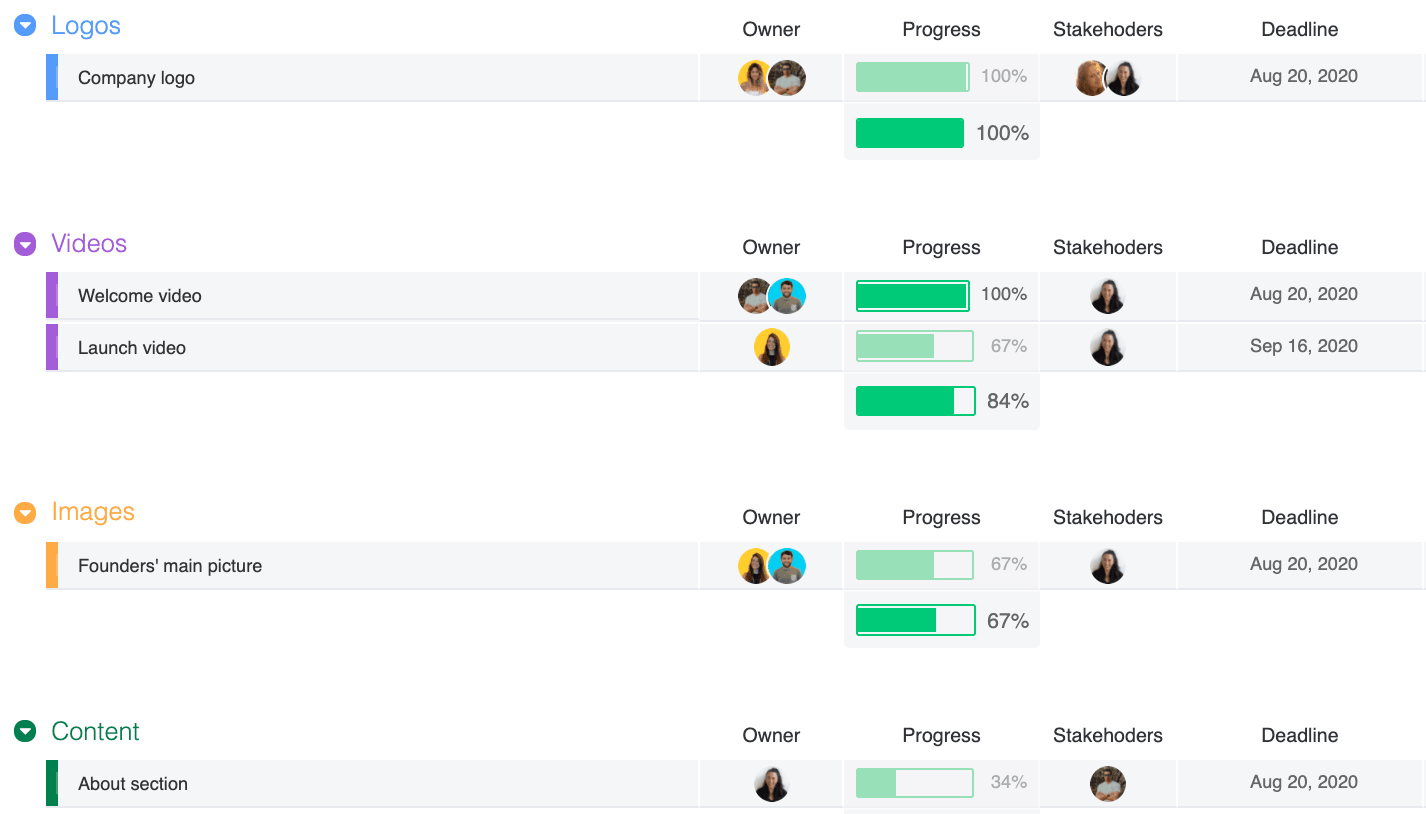
For example, when you use monday.com’s Work OS to build a marketing calendar, you can create a board for your digital assets or add an assets column directly to your marketing calendar.
That way, everyone can find the latest version instantly.
7. Communication features
Not only do 69% of marketers find it hard to collaborate on content ideas, but 49% of remote marketing teams also complain that it’s challenging to communicate shifting priorities and objectives.

Your editorial calendar shouldn’t only serve as a place to show upcoming campaigns, but it should also allow your team to communicate updates, changes, and difficulties.
Find a marketing calendar tool that provides functionalities that collate conversations about each campaign in one place. That way, teams can collaborate on content ideas or campaign alterations, as well as having one go-to place to find out about any changes or updated objectives.
8. Progress-tracking
Nearly half of all teams say it’s difficult to get an accurate overview of project progress. This is because traditional marketing calendars are static lists of chronologically organized tasks.
With a dynamic marketing calendar, you can track the progress of each marketing campaign as you go.
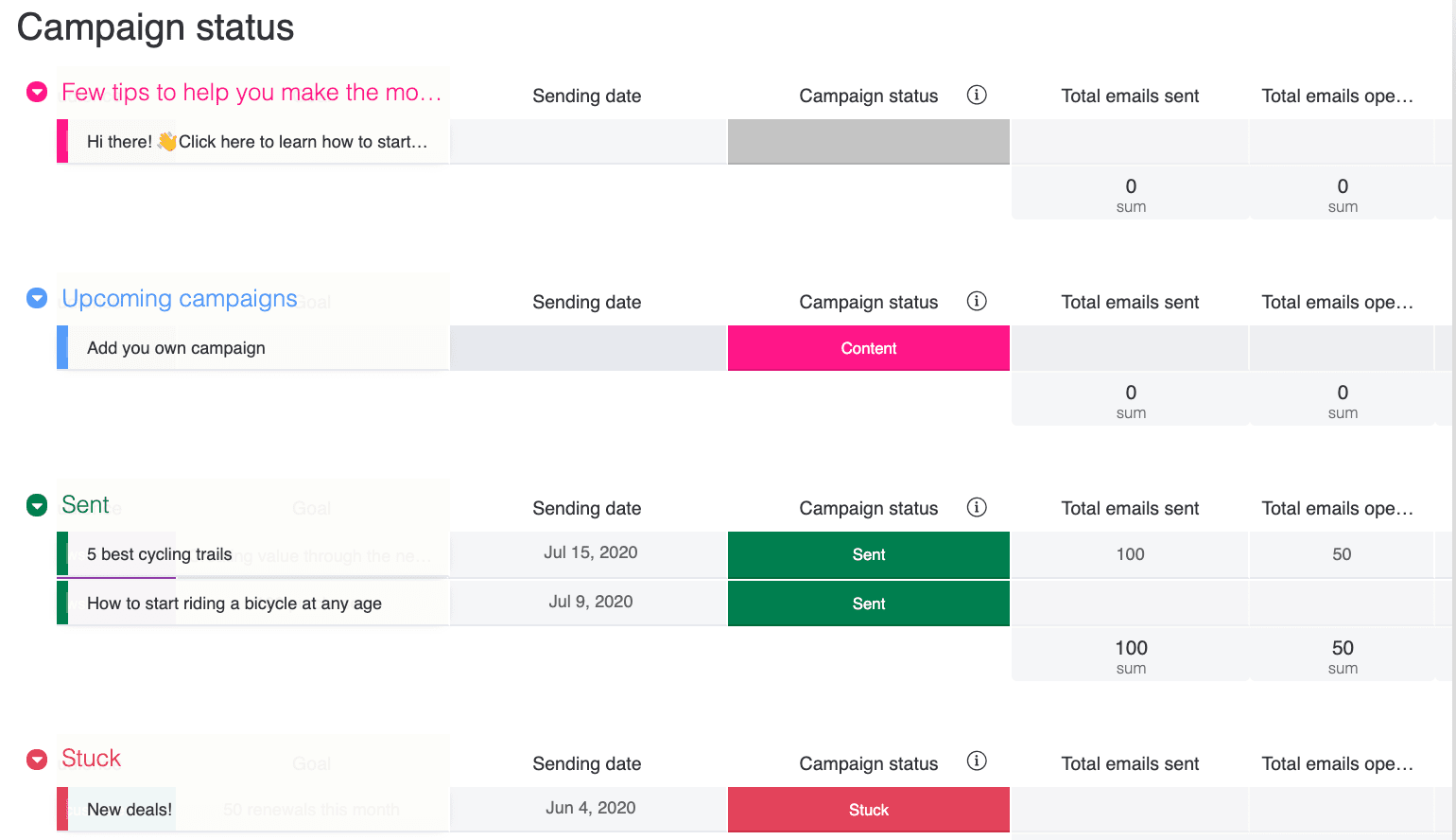
Find a marketing editorial calendar tool that enables you to track the status of content production and campaign distribution. This makes it simple to get a quick overview of progress, as well as highlight any bottlenecks before they cause major delays.
9. Automation
Repetitive administrative tasks can seriously slow down progress for your marketing team.
This is especially true for distributed teams. 28% of remote teams report an uptick in mundane tasks and status updates when working remotely compared to working in the same office.
You can reduce repetitive administrative tasks with a marketing calendar that includes automation functionalities.
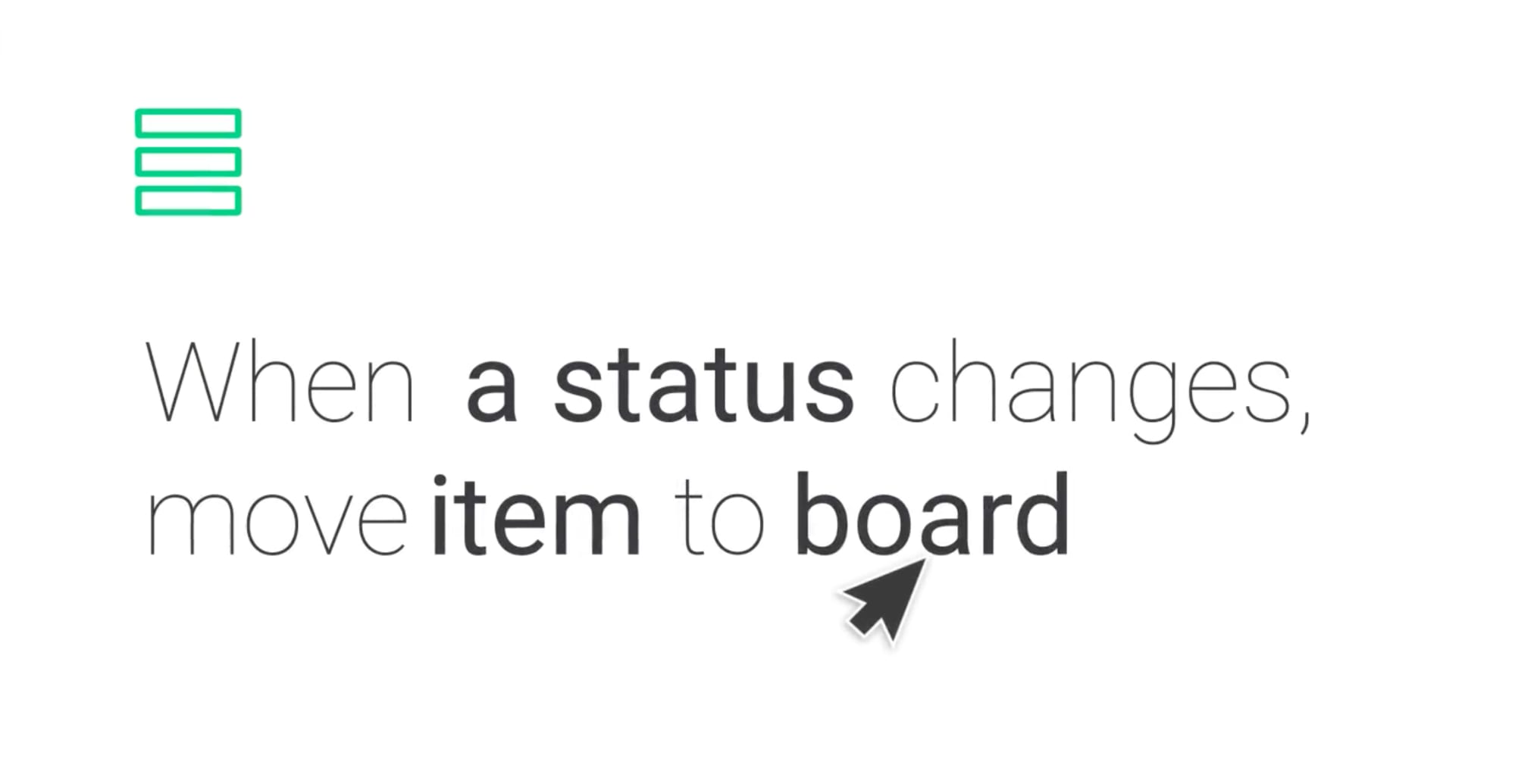
You’ll also benefit from a marketing calendar that automates content delivery.
75% of businesses are currently using marketing automation tools. Of the marketers who do use automation, nearly a quarter use it to automate marketing content delivery, because it relieves this administrative burden from your team.
How to use monday.com as a dynamic marketing calendar
When you build your marketing calendar on monday.com’s Work OS, you don’t just get a static list of upcoming campaigns.
You get a centralized workspace where your whole marketing team can collaborate on workflows, so you can move from strategy to execution without a hitch.
That’s why Joyce Wismer, the Marketing Coordinator for Kalamaras Group, calls monday.com’s marketing calendar a “marketing planner, file sharing tool, and activity record, all in one.”
Here are just a few of the ways you can use monday.com’s Work OS as a marketing calendar.
1. Plan your marketing strategy
Put together a high-level plan of your campaigns using the Marketing Strategy template.
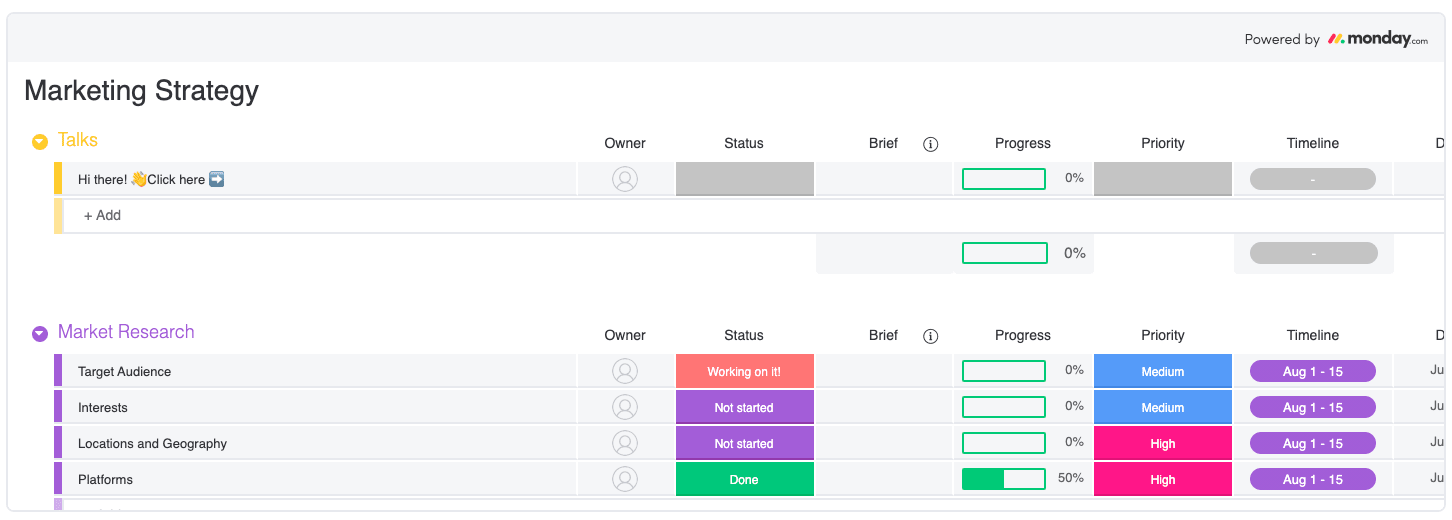
Use this template to centralize your market research, brainstorm campaigns, and set marketing goals.
From here, you can begin to prioritize campaigns as you flesh out your marketing calendar.
2. Build a flexible marketing calendar
The Marketing Calendar template is a dynamic, multi-functional editorial calendar that can be used to schedule campaigns and track progress.
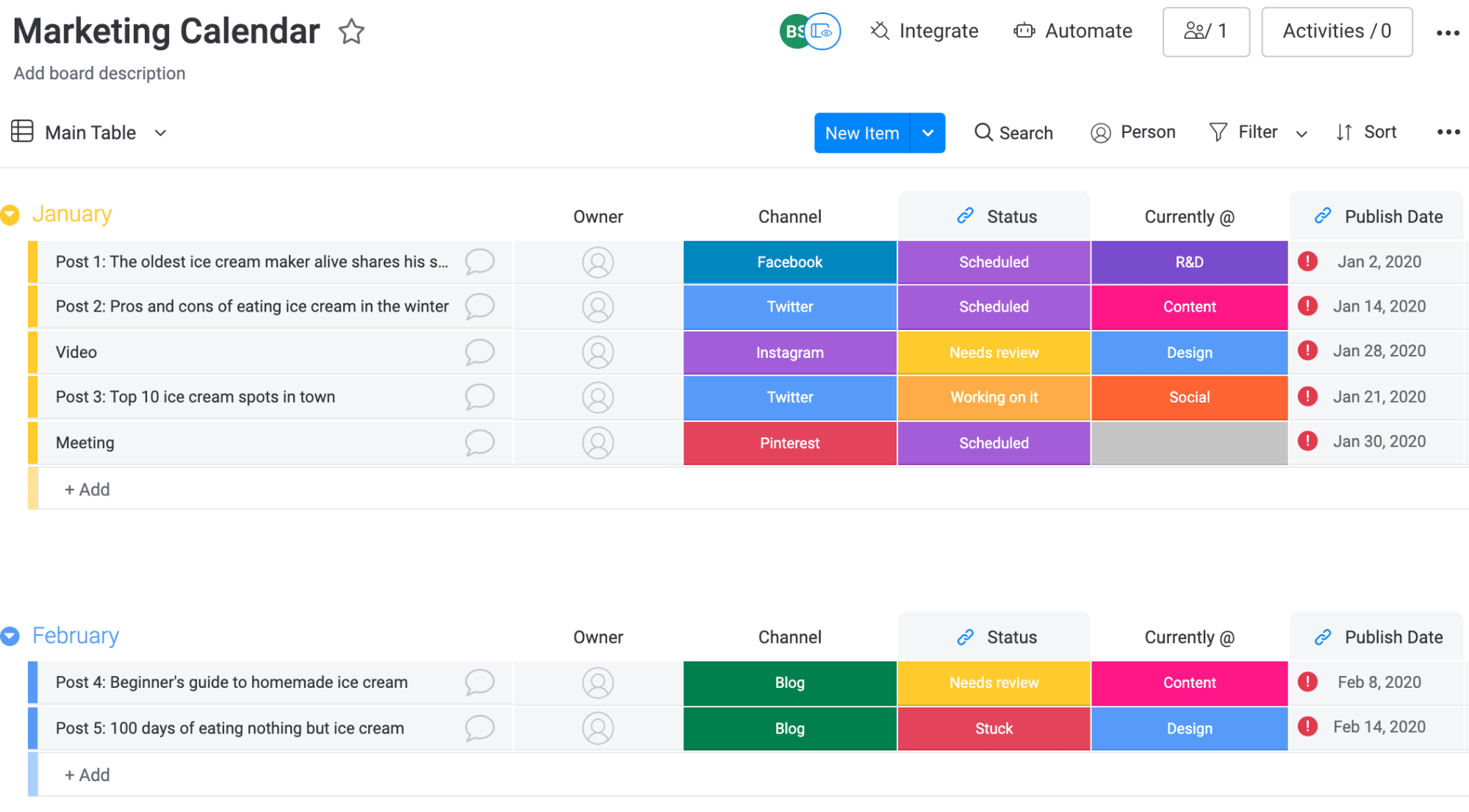
Use this marketing calendar template for high- and low-level campaign planning. Assign tasks, deadlines, timelines, and channels to each post.
You can even add a column to manage all digital assets and track progress using the colorful status bars.
3. Plan your marketing budget
Use the Marketing Budget board template to plan your financial resources.
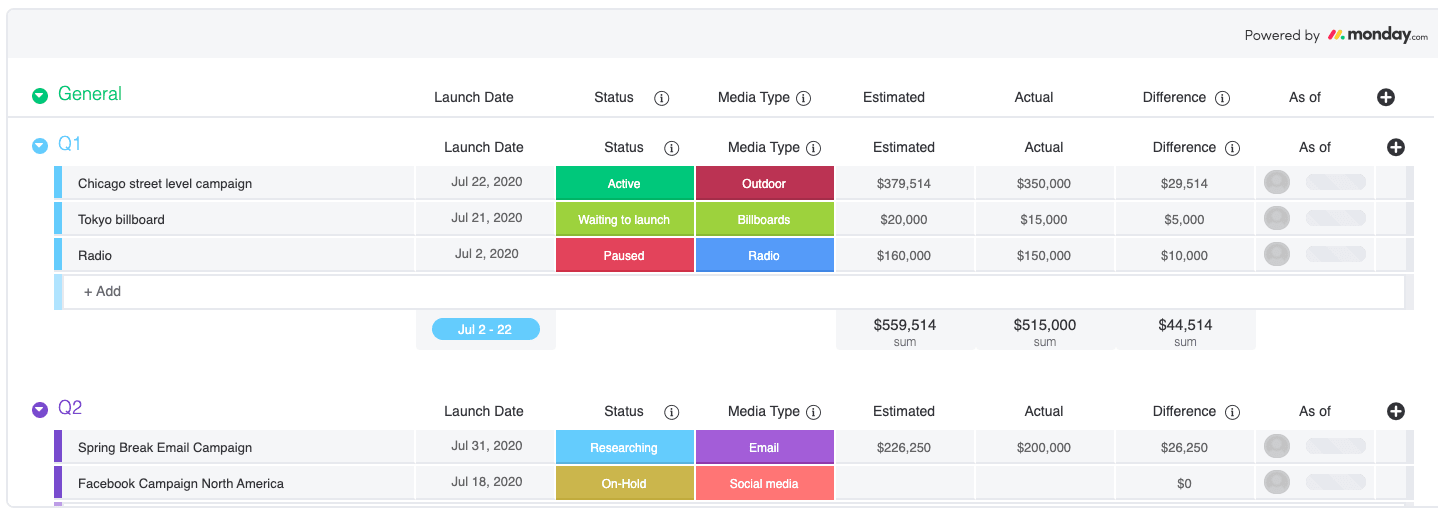
Plan out estimated costs, allocate budgets, and calculate the amount spent as you go.
This template also helps track and accelerate budget approvals with the status bars. Set automations that automatically notify approvers when a status changes.
4. Track campaign progress
Sometimes you’ll need to alter tasks on your content marketing calendar based on campaign performance.
![]()
Keeping track of campaign progress with the Campaign Tracking template will help you plan future campaigns based on the success of live campaigns.
Use this template to track campaign budgets, performance, and progress all in one place.
5. Automate repeatable tasks
Reduce the burden of administrative tasks with monday.com’s automations.
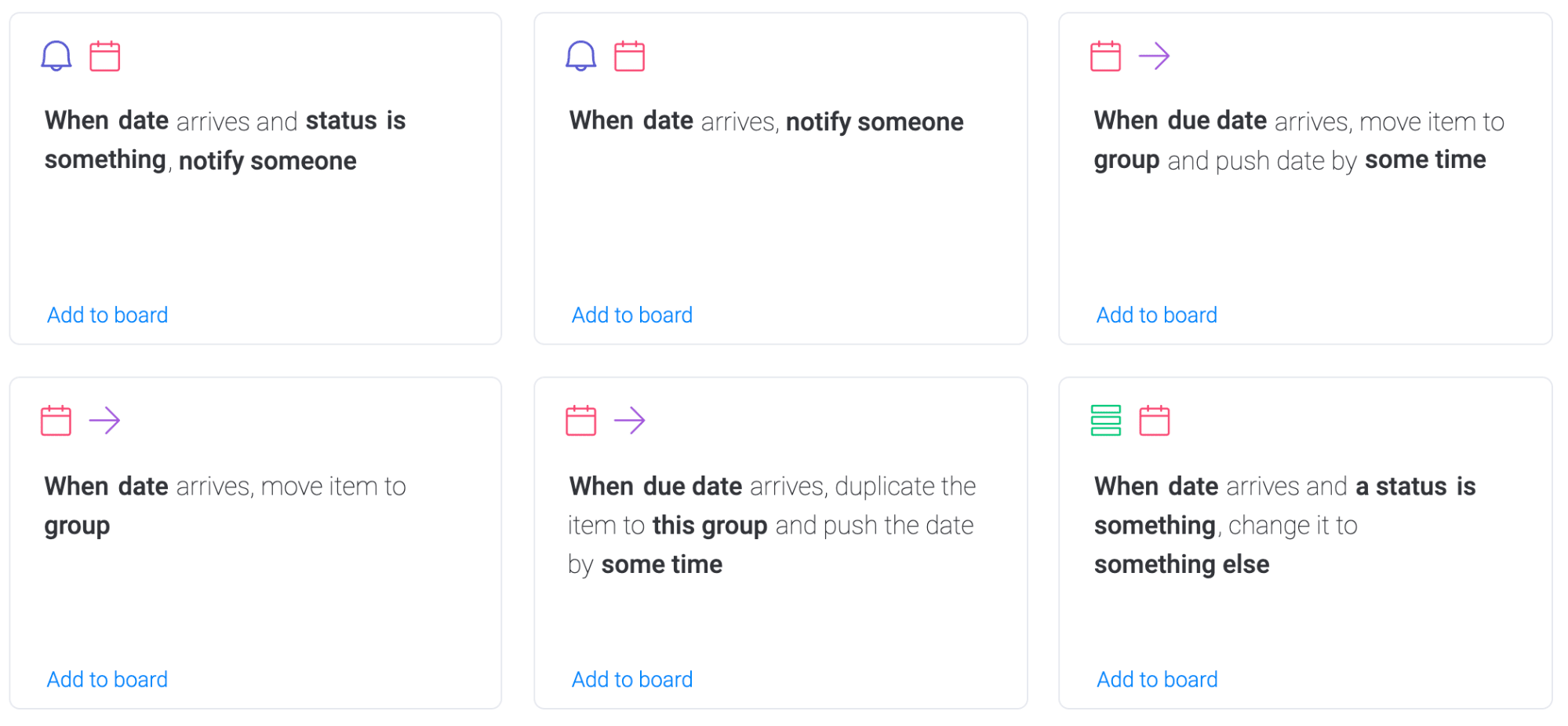
Either choose from monday.com’s pre-programmed Automation Recipes or customize your own.
Speed up administration by automating tasks based on date changes, status changes, recurring activities, and more.
6. Integrate with your favorite marketing tools
Publish marketing content directly from your monday.com marketing calendar by integrating with your favorite marketing tools.

You can integrate directly with a whole range of tools that aid publishing and campaign tracking, such as HubSpot and Mailchimp.
Alternatively, integrate with hundreds of other social platforms, marketing channels, and analytics tools through Zapier.
Build a powerful marketing calendar now
Your marketing calendar isn’t simply a list of upcoming campaigns. It’s a place for your marketing team to oversee projects, collaborate, and stay updated.
If you’re not providing a dynamic marketing calendar that fosters accountability and centralizes information, you’ll have confusion across your whole department.
Stop wasting time with whiteboards and Google Calendar. Try monday.com’s 30-day free trial today.


